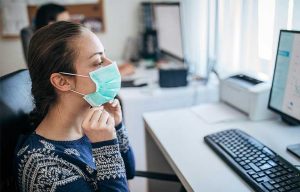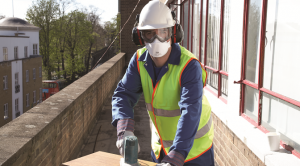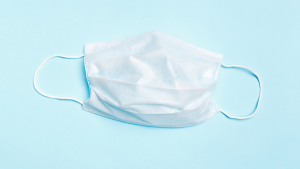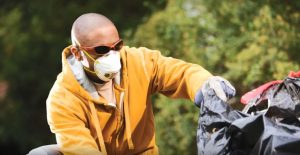 As states reopen from stay-at-home orders, many are now requiring people to wear face coverings or Personal Protective Equipment (PPE) in most public spaces to reduce the spread of COVID-19.
As states reopen from stay-at-home orders, many are now requiring people to wear face coverings or Personal Protective Equipment (PPE) in most public spaces to reduce the spread of COVID-19.
Coronavirus spreads when an infected person speaks, sneezes, or coughs within 6 feet of others. You may have the virus and spread it even if you feel well. So it’s important to cover your nose and mouth when outside your home.
Wearing a PPE mask or cloth face covering can slow the spread of COVID-19 by limiting the release of virus into the air. It also reinforces physical distancing, and shows you care about the health of others.
A recent study published in Health Affairs, for example, compared the COVID-19 growth rate before and after mask mandates in 15 states and the District of Columbia. It found that mask mandates led to a slowdown in daily COVID-19 growth rate, which became more apparent over time. In one simulation, researchers predicted that 80 percent of the population wearing masks would do more to reduce COVID-19 spread than a strict lockdown.
There are different kinds of PPE masks and face coverings, and proper ways to wear them.

Who needs a mask?
- Anyone going outside their home
- Workers in customer-facing industries
- Workers in offices, factories, or any group setting
- Doctors, nurses, and other health care professionals
- Other workers, as dictated by industry guidance
When should you wear a mask?
You should wear a mask or face covering whenever you’ll be around someone you don’t live with, including: 
- In any indoor public space
- When waiting in line
- When getting health care
- On public transportation or when ride-sharing
- At work, when near others or moving through common areas
- Outdoors, if you can’t stay 6 feet away from others
When can I take my mask off in these settings?
There are times when it’s okay to take your mask or face covering off, such as: 
- When eating or drinking
- If a hearing-impaired person needs to read your lips
- If wearing a face covering imposes a risk to you at work – for example, if it could get caught in machinery
- When you’re not sharing a common area, room or enclosed space with others
- When you are getting a service to the nose or face
- When outdoors in public and can stay six feet from others
Kinds of Personal Protective Equipment masks
There are many kinds of masks, but these are the 3 most common.
Cloth mask or face covering – It is effective when combined with keeping a 6-foot distance from others. Wash in the laundry or by hand between uses.
Surgical mask – Some non-medical workers also wear surgical PPE masks for disposability and fluid protection. Replace and dispose of it according to workplace guidelines.
N95 respirator mask – This is a PPE mask with a respirator that blocks 95% of particles that are otherwise inhaled. Start with a new mask every day.
For more details, or if you’d like to learn more about Personal Protective Equipment awareness and COVID-19 safety, please refer to the source links below as well as your online training provided by HR.

